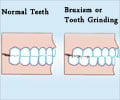Coffee and Parkinson’s disease
Coffee may actually reduce the risk of Parkinson’s disease. But in postmenopausal women on HRT, the risk increases.
Parkinson’s disease (PD) is a neurological disorder that affects about four million people worldwide. It mostly affects older adults between the ages of 65 and 85. The symptoms may start appearing after the age of fifty. The disease is characterized by muscle stiffness or rigidity, slow movements, imbalance, tremor at rest and occasionally communication problems.
This medical condition has fortunately no conflicting evidences as far as coffee consumption is concerned. Several large studies on coffee consumption and Parkinson’s disease have consistently demonstrated that drinking coffee can lower risk of Parkinson’s disease. A case control study to examine how coffee is related to Parkinson’s disease in Chinese population, reported that drinking 3 cups of coffee per day for 10 years would lead to a 22 percent risk reduction of Parkinson’s disease.
Another study published in the Journal of Alzheimer’s Disease suggested drinking 2-3 cups of coffee daily to reduce the risk of developing PD by 25 percent in men and 14 percent in women.
There is a catch though. Studies in women regarding relationship between caffeine intake and Parkinson’s disease have been inconclusive. This may have something to do with hormone therapy. A study from the Harvard School of Public Health found that postmenopausal women who took hormone replacement therapy (HRT) and drank more than five cups of coffee a day were one and a half times more likely to develop Parkinson’s disease than women who were not into HRT.
Although the mechanism of caffeine action in preventing the risk of developing Parkinson’s disease is not yet fully identified, it is conceptualized that caffeine blocks the adenosine receptors that regulate dopamine release. Dopamine is a neurotransmitter that modulates movement. In Parkinson’s disease, the dopamine producing neurons are damaged by oxidative damage. The ideal treatment focuses on increasing the production and utilization of dopamine.


















